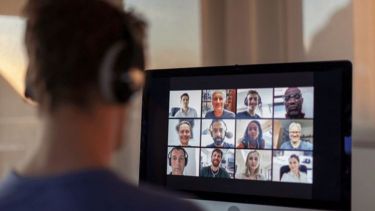
The diversity of the HE student body is growing. For example, in the 18/19 academic year there were 9.6% more mature learners than in 10/11. Furthermore, students declaring a disability had also increased by 6% and the proportion of minority ethnic students rose by 7.5% (The UK Office for Students, 2020).
This increase in diversity is potentially owing to the diversity and inclusion recruitment that occurs at central university level, which consequently drives widening participation programs, as well as women in STEM projects. Additionally, it is worth noting that statistics for online learners indicate this group are more diverse than on-campus groups.
How is diversity being represented in our courses?
This is very positive news that our campuses and student bodies are becoming more diverse, but how are we ensuring students are receiving an equally diverse and engaging learning experience? And are we sure current courses are not alienating or excluding them from learning?
Diverse learning content can create a richer learning experience for all students by bringing to the fore voices and narratives that are sometimes excluded or hidden, promoting the normalisation of these voices rather than contributing to their marginalisation. Arguably the awareness of equality and diversity should be an attribute of all graduates. This could be implemented either by providing additional training alongside their course, or by having diversity and inclusion as an embedded aspect of their course.
These two possibilities were compared by Nelson Laird and Engberg in 2011. Their findings indicated that where equality and diversity was embedded within the course and its activities, the students showed a greater understanding of diversity, the learning was more inclusive, and the teachers received higher ratings for teaching excellence.
Creating diverse and inclusive learning
The positive impact diverse and inclusive courses can have has been proven, but are we creating them? Claeys-Kulik et al (2019) suggest that only 26% of universities in their study indicated that academic teaching staff have responsibility for implementing content relating to diversity, equality and inclusion.
Therefore, we must take steps to look back at existing course content and look at it from the diversity and inclusion perspective, as well as ensuring that any new course content has diversity and inclusion embedded from the outset.
There are many things to consider when creating truly diverse and inclusive learning content, but there are some points to take into consideration when building new or refreshing course content:
- References – Could the referenced sources be more diverse? Bringing in diverse perspectives enriches learning and promotes critical thinking.
- Images and video – Could these be more diverse? It’s essential that any images and video reflect the world we’re living in today in relation to gender, race, disability, age and more. Avoid any stereotypes and look for authentic, positive representation. It’s important to also be mindful of any cultural sensitivities. For example, some cultures can find images of pig's offensive, so using something like an image of a ‘piggy bank’ in a finance course should be avoided.
- Language – Language should not be discriminatory, and stereotypes should be avoided. Simple things like using gender neutral pronouns like they or them rather than he him.
- Case studies – could the case studies used be more diverse by using a range of international examples and avoiding stereotypes. Are these also authentic representations? It is important not to perpetuate the limiting positive stereotypes such as black people being portrayed as good at sport or Asian people being good at Maths.
- Content – Ensure your content isn’t too focused on your own country unless it is relevant. Content needs to promote critical thinking that accounts for different perspectives of culture, nationality, and ethnicity.
Are you are looking for support to implement diversity and inclusion in the online classroom, either for a new or existing course?
Pearson’s course design experts can help. Their specialist knowledge can assist you in creating a diverse and inclusive online course that is accessible to all students. Discover what Pearson’s course development service can do for your institution or get in touch for a consultation.
Authors:
Catherine Thomas-Varcoe (Lead Instructional Designer at Pearson) and Carly Strachan (Quality Assurance and Content Editing Team Lead at Pearson)

















